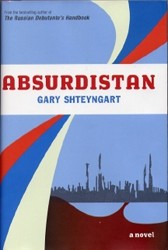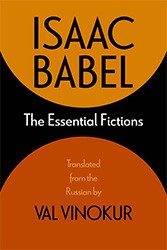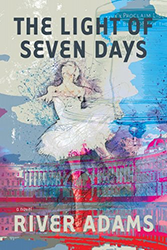Zachary Solomon’s A Brutal Design takes us to Duma, an experimental and utopian city composed of refugees from various nearby wars and crises. These crises are nearby geographically, but also politically; and early on we see that the communist, socialist, and — most critically — fascist tendencies that Duma’s population once sought to flee have very much made their way into the city’s mysterious governance.
Our guide for the journey is Samuel Zelnik, a Jewish architecture student whose main draw to Duma is that his most probable alternative is the Gulag. Which is not to say that he isn’t interested in the experimental utopia — he is — but he also regards the project with skepticism. Zelnik’s goal, for instance, is to find his long-lost uncle in this place where family and past are unilaterally erased. Because the narrator is a newcomer and not a devotee, the novel feels close in tone to Kafka’s The Castle, which is clearly an inspiration. Duma itself manages to be kafkaesque without being derivative. It does so in three important ways: size, speed, and art.
First, the sheer size and scope of Duma is incredible, and Solomon’s attention to detail is keen. From a complex housing system, to a labor plan, to a landscape that stretches from desert to sea, Duma is a well-conceived and well-executed world. It’s complete, consistent, and utterly dystopian.
Then there’s the speed of the novel, which — in just under 250 pages — introduces us to Duma both as it’s meant to be and as it actually is. We then watch as these two discrepancies collide. Zelnik’s real troubles begin almost immediately, when he is assigned to manual labor instead of the anticipated architecture work. Anything but a philosophical novel that shies away from action, A Brutal Design maintains a furious pace.
And yet this is, at its heart, a philosophical novel. Concerned with the intersection of fascism and art, Solomon explores the relationship between the urge to create and the urge to dominate. The message seems to be that, in a world in which not everybody’s vision is the same, differences are going to have to be resolved, either by concession or force. It is the urge to bring an imagined utopia into physical existence, then, that is responsible for the creative urge, but also the domineering one.
If the novel has a weak point, it is that the population of Duma (aside from Zelnik) lacks the resistance to political abuse that one would expect such refugees to exhibit. It’s interesting that direct victims of this abuse could be so naive. Had Duma been presented as a capitalist heaven, its appeal would have been clear. But the socialist utopia as cure for failed socialist utopias seems like a hard sell. Because of this, we are sometimes left wondering how the city came to be, and what its appeal was to those who labored to build it.
Still, it’s a minor concern that’s largely eclipsed by Solomon’s point about the connection between fascism and art. With clear, muscular prose and a world that comes to life in all its strange detail, A Brutal Design is a strong debut from an author with something to say.
Daniel H. Turtel is the author of the novels The Family Morfawitz and Greetings from Asbury Park, winner of the Faulkner Society Award for Best Novel. He graduated from Duke University with a degree in mathematics and received an MFA from the New School. He now lives in New York City. Follow him on X at @DanielTurtel.





